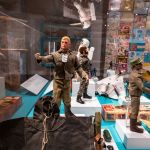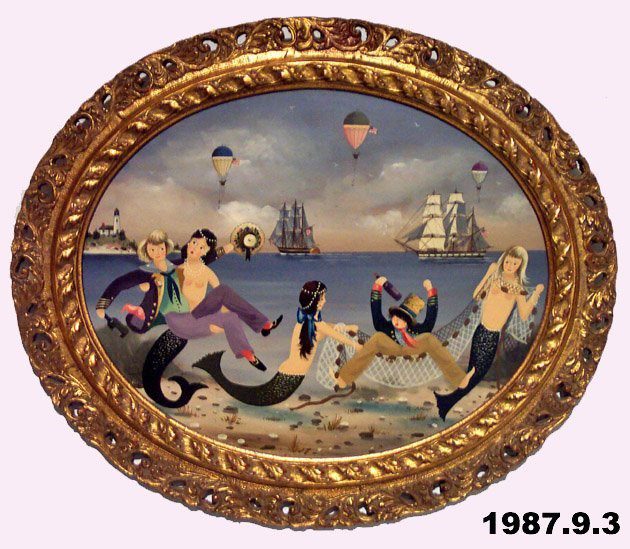GI JOE: America’s Favorite Military Toy Created by U.S. Army Veterans
Amanda Wastrom, Assistant Curator
Working on this past year’s Let’s Play! New England Toy Stories exhibition, featuring New England made toys and games, meant doing a deep dive into childhood. Many of the most successful toys of the 20th century were designed—and sometimes produced—right here in New England. Hasbro’s G.I. Joe often tops that list. The toy’s origin story begins in the 1960s—and many of the people who factored into its creation were veterans of the U.S. Military.
Stanley Weston, an Army veteran of the Korean War, was one of the men behind the original idea for G.I. Joe. He loved military history and was passionate about creating a military-style toy for boys. He envisioned it as a male counterpoint to Barbie. You could not only sell the doll, but an unending stream of accessories too.
When Weston pitched the idea to Hasbro’s top executive, Merrill Hassenfeld, he dismissed the idea. Hasbro was not in the doll making business, he said. But Hasbro’s Head of Research & Development, Don Levine, was also at that meeting. As a Korean War veteran himself, he was intrigued.
Taking advantage of the fact that the boss was going on a two-week vacation, Levine took Weston’s idea and ran with it, instructing his team to fast track a prototype. A trip was made to the National Guard Armory (only a couple miles away from Hasbro’s headquarters in Pawtucket, RI) to load up a car with M4s, M-16s, and bazookas—for research, of course! When Merrill returned from vacation, Levine’s team presented to him the concept:
The initial set had four characters, one for each division of the U.S. military: Army, Navy, Air Force and Marines. Each one had exact miniature copies of all the gear, the clothes, and the weapons. The original figures were high-quality and featured articulating limbs, nicely constructed clothing, and all kinds of accurate, miniature details. When presented a second time, Merrill gave it the greenlight.
There was one major concern: the marketing team at Hasbro thought no one would be interested in a “doll” for boys. So, they coined the term “action figure.” It was genius—and became an entirely new category of toys. G.I. Joe debuted in 1964, a time in U.S. history when America was still glowing in post-World War II admiration. Almost every American family had a father, grandfather, uncle or brother who was their “G.I. Joe.” In 1965, the toy brought in $36.5 million in sales and was Hasbro’s next major hit, after Mr. Potato Head. Also in 1965, Hasbro released a black G.I. Joe Action Soldier, one of the first mainstream toys created for African-American boys.
Now in its fifth decade, G.I. Joe has gone through its ups and downs over the decades—it has been revamped and rereleased, with an ever-expanding slate of characters and stories to go with it. The 1980s redesign combined the action figures with a comic book series, G.I. Joe: A Real American Hero and an animated series, both produced in collaboration with Marvel Comics, a successful formula that would be repeated with other toys such as Transformers, Jem, and My Little Pony. It is estimated that at that time, one in three American boys played with G.I. Joe. It became (and remains) the most popular action figure of all time.
- Let’s Play! Exhibit
- Merrill Hassenfeld
- Let’s Play! Exhibit: G.I. Joe Tent
- Let’s Play! Exhibit: G.I. Joe newer models
- G.I. Joe Comic Book













